Welcome to Screen Week! Join us as we explore the films, TV shows, and video games that kept us staring at screens. More from this series
For many people, 2017 was a year endured rather than lived. If 2016 was marked by the sheer immediacy of survival, then that sense of heightened awareness led us to wonder just how the fuck we got to where we are now. As reality continued to morph into the cartoonishly hyperreal landscapes of a nightmare, the cinema of 2017 brought forth a much-needed wave of pragmatism, forcing us to take a long, hard look at our collective histories — both recent and long ago, historical and fictional — as a means of regaining our bearings in a world where the rug had seemingly been pulled out from under our feet.
Whether these films were tackling issues of race (Mudbound, I Am Not Your Negro), sexuality (BPM, Call Me By Your Name), or even our youthful connection to the towns we grew up in (Lady Bird), there was an urgent sense of gazing back in time to reckon with our mistakes. And these contemplative reevaluations wisely skirted pure nostalgia, paving the way for thrilling narrative and visual experiments, from slowly peeling back the perfectionist veneer of the 1950s London fashion world to reveal its psychological kinks (Phantom Thread) and extolling the humor and wit of a reclusive poet (A Quiet Passion) to examining a collision between personal obsession and imperialism (The Lost City of Z) and a daring retcon of the world’s most ubiquitous film series (Star Wars: The Last Jedi).
Even topics that have been long since rendered inert were made exciting once again in 2017. Christopher Nolan’s use of World War II (Dunkirk) as an experiment in crosscutting and tension-building and Albert Serra’s wry Renaissance-painting-come-to-life (The Death of Louis XIV) displayed new aesthetic strategies for representing and grappling with the past, while James Franco used the behind-the-scenes on-set comedy (The Disaster Artist) to explore both the authenticity of our attachment to so-bad-it’s-good cinema as well as the emotional and economic intricacies behind its own making.
But where many films looked behind us, there were still plenty drawing inspiration from the urgency of our current and near-future predicaments. Some of our favorites managed to touch on the potential repercussions that technological advancements will have on our consciousness and memory (Marjorie Prime) or our sense of self-worth (Ingrid Goes West), while others remained firmly grounded in the struggle to simply exist and make it to the end of each day (The Florida Project, Good Time). These 30 films demonstrate that the art of filmmaking can still be emboldened by sociopolitical turmoil to re-examine its own means of production, simultaneously breathing new life into once-stale forms and breaking boundaries to create new ones.
30
BPM
Dir. Robin Campillo
[The Orchard]

If the personal and the political are inseparable, then so too are life and death. Robin Campillo kept these stakes entwined at the front of BPM, emerging with something miraculous: a film about unimaginable tragedy that makes every effort to assert humanity. Set within the Paris branch of ACT UP in the 1990s, BPM followed a cluster of young activists — largely HIV positive — fighting not only to be visible in the public eye or tolerated as part of French culture, but also to create actual, tangible change. Campillo made clear that, in this world, political action is not optional: these characters were fighting, quite literally, to save lives. The film’s genius was in building these lives to their full complexity — whether the bliss of the club, the joy of belonging to a community, or the pain of watching the person you love pass away. Much more than a sober, “important” film, BPM was fully alive with all the contradictory truths that life embodies, including death. To paraphrase one character’s eulogy of another, it was a film that lives these truths, beautifully, in the first person.
29
Nocturama
Dir. Bertrand Bonello
[Wild Bunch]

Is radicalization without a political agenda possible? Bertrand Bonello’s latest film Nocturama explored such an idea, a thriller with no time for ideology but all the more provocative for it. Indeed, the homegrown terror attacks it depicted were executed by a group of French youths with no unifying purpose, not even a common cause for complaint. The bombings and murder were a simple product of teenage ennui. Or so it seemed until the film’s second act. After a meticulously coordinated execution resulted in chaos-unleashing attacks all over Paris, the teenagers took refuge in an upscale department store. Ostensibly waiting for their reckoning, they watched TV reports of their actions with little interest. No revolutionary proclamations were issued or contingency plans for the attackers to escape outlined. Instead, they donned designer clothes, drank expensive wine, and blasted “Whip My Hair” on high-end stereo systems. Then we realized these French teens couldn’t possibly rise against the only system they knew. They couldn’t survive outside of it, so they chose to end their lives as perfect citizens of it as they could. Subversion and consumption have long been reduced to the same process, terror redefined as the ultimate consumerist temper tantrum, the wildest of animals a neatly displayed part of the spectacle.
28
Ingrid Goes West
Dir. Matt Spicer
[NEON]
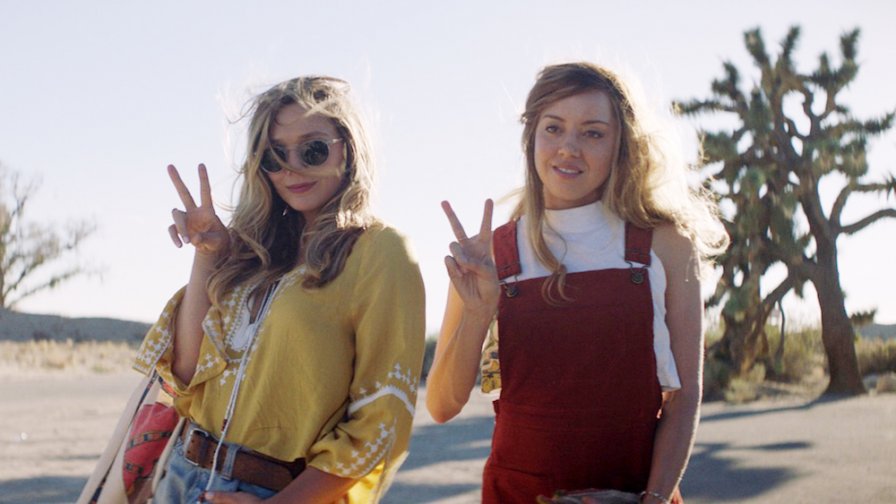
The ultimate joke behind Ingrid Goes West, Matt Spicer’s on-the-nose stalker comedy for the iPhone age, is that as much as we might want to see the film’s gaudy SoCal personalities as caricatures or view its characters’ relentless social media dependence as blown out of proportion, the truth is that the movie pretty much told it exactly like it is. As we watched social-media addict Ingrid Thorburn (a never-better Aubrey Plaza) pry her way into the personal life of minor Instagram celebrity Taylor Sloane (Elizabeth Olsen, fake to perfection), it might have seemed like Thorburn’s sociopathic road to destruction lay outside the realm of what a sane person would ever do. But the horrifying reality, of course, is that privately stalking one another has become a normalized facet of our society, and depending on the reassuring approval of strangers is how our entire generation has been taught to value its self-worth. Of all the film’s insufferable, narcissistic characters, not one of them didn’t directly remind me of somebody I know, their food hashtags so painfully familiar, their insistence on calling each other their “favorite person ever” like an emoji knife straight to the gut. But most harrowing of all was the simple image of Ingrid, sprawled out on her couch, trying to find the perfect response to a comment, re-typing her reply over and over again, each “haha” a desperate, maddening cry to be loved.
27
Okja
Dir. Bong Joon-ho
[Netflix]
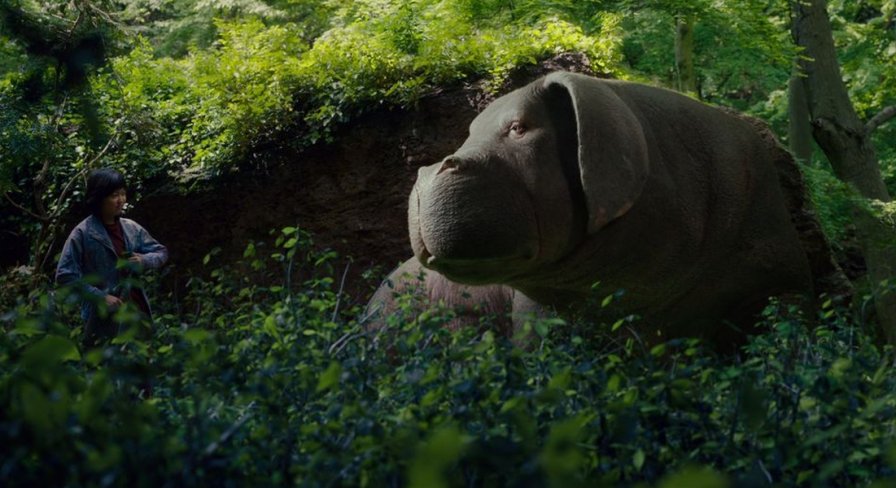
Any kid who grew up on a farm will tell you that pigs are smart, friendly creatures, more pets than meat products. At least until they end up on the dinner plate. Bong Joon-ho’s Okja took this macabre piece of folk sentiment and crafted it into a darkly fantastic fairy tale about cross-species friendship, radical activism, and the agricultural-industrial complex. While this may not have been the classic Spielbergian formula nostalgists were seeking from a film like this, the friendship between a young Korean farm girl (Ahn Seo-hyun) and the giant, genetically modified pig creature of the title was ironically among the most honest human relationships of 2017. Of course, it helped that the actual humans in this film included Jake Gyllenhaal in his most natural state of twisted glee, two Tilda Swintons, and Paul Dano at the radical edge of sincere bro activism. The nightmarish final sequence in the slaughterhouse may have been disturbing, but if you ask us, that was kind of the point. The sole purpose of art isn’t necessarily to make us feel good about our place in the world.
26
The Lure
Dir. Agnieszka Smoczynska
[Janus]

A real event movie, a total spectacle that careened from gritty violence to pop culture gloss, swaggering through multiple genres, Agnieszka Smoczynska’s The Lure tackled the latest incarnation of the battle of the sexes from a totally unexpected angle. Golden and Silver were a pair of innocent/feral mermaid sisters who got dropped into the thick of the politics of exploitation when, fresh from the river, an old barnacle put them onstage at his cabaret/strip club. Using fishiness as a metaphor for female power, identity, and sexuality, Smoczynska created a brilliant portrait of what male fascination, fear, disgust, and desire look like from a woman’s perspective. She took men’s bad behavior as a given; far from rolling up her sleeves with an American determination to correct the problem, the question she posed was whether to love men anyway — risking self-annihilation — or kill them. Golden and Silver embodied the two options, and their adventure living amongst humans, punctuated with pop song and dance sequences and populated with rich and vivid characters, was gorgeously shot, provocative, wise, and dangerously fun.
25
Baby Driver
Dir. Edgar Wright
[TriStar]
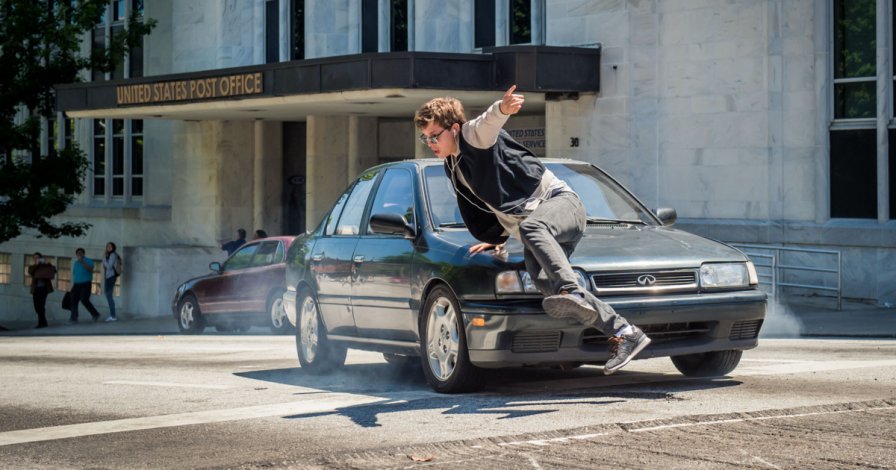
Total, idle speculation here, but it seems pretty apparent that Edgar Wright is what we in the biz like to call a “fan of music.” Giving a film a memorable soundtrack is one thing. Choreographing an entire film to its soundtrack, making sure every scene down to individual sounds like gunshots or squealing brakes sync up, is another thing completely. But that’s just what Edgar Wright did with Baby Driver, a film that managed to take his already apparent love for memorable scenes set to music and *checks exhaustive list of car terms* shifted things into fifth gear, remembered to signal before turning, and burned all the rubber with it. From rock to soul to hip-hop to one very specific Simon & Garfunkel song, music breathed a frenetic energy into the film, which returned the favor in kind. Whether a climactic chase set to “Hocus Pocus” or a casual coffee run to “Harlem Shuffle,” everything felt original and exciting. On a sound editing and design level alone, Baby Driver had few equals in 2017. And as a ridiculously fun and tense entry into the heist/car chase sub-genre that managed to pay homage to its forebears, while also carving out its own spot among them? It was certainly unmatched there, too.
24
Mudbound
Dir. Dee Rees
[Netflix]
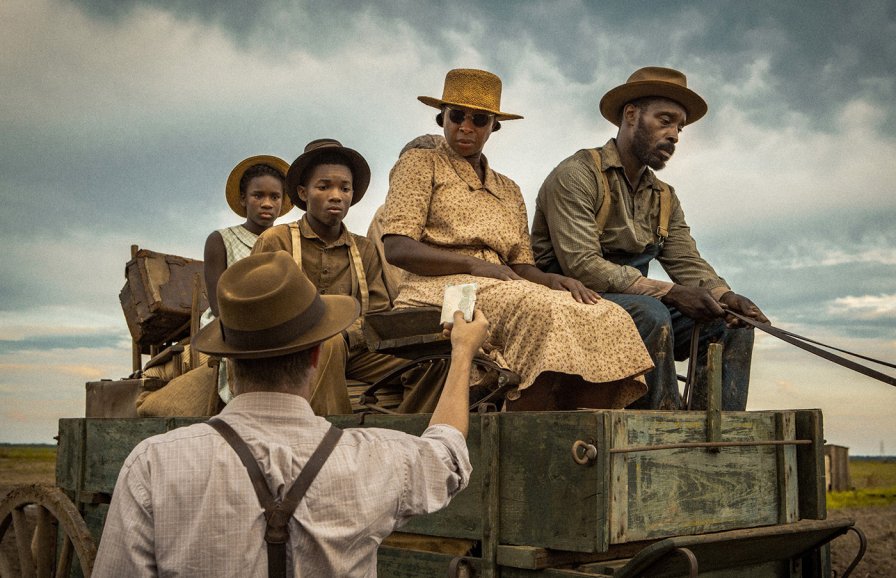
It’s World War II, and America is a golgotha. The sky is somehow more civil. Folks speak in poetry. Rees’s historical epic achieved much in its short length; it was an unflattering portrait of hard-luck white America reminiscent of Faulkner or Steinbeck (all the way down to its many epistolary narrations, shared across racial lines), a complicated tale of surrogate brothers united by trauma rather than skin color, and a hymn for how black Americans continue to endure the specter of slavery. Now, crack all that open, and there was still more to gain — the brutal dangers of being “well-meaning,” some even-handed symbolism that illustrated the racist thought of black sexuality/assertiveness, and the strained stubbornness of masculinity. Crack all that further, and, yeah, you get it. Mudbound reclaimed the American historical epic film as something needed to be retold with enormous tact and sensitivity, to let subtlety and dignity persist amongst the infertile soil and filthy, oppressive air. Having a firebrand ensemble — through Mary J. Blige, Carey Mulligan, Jason Mitchell, Jonathan Banks, etc. — to grace the Delta and give it proper due didn’t hurt either.
23
The Disaster Artist
Dir. James Franco
[A24]

“Oh hi Mark.” The Room was considered the best worst movie ever made. It featured cringe-worthy acting, conversations that went nowhere, superfluous plot points, and lots of gratuitous sex. There’s also a scene wherein characters play football in tuxedos. This monstrosity also somehow cost six million dollars to make, yet has earned a rabid cult following since its 2003 release. This year, James Franco decided to pay homage to the production by casting himself as the director and lead actor in The Disaster Artist, based on actor Greg Sestero’s published account of the original production. Sure enough, the film revealed The Room as the obvious shitshow it was. Still, The Disaster Artist pulled off being uncannily enjoyable and legitimately funny. Franco also brought a human element that was absent in the original: two actors, bound by pact, struggling to get their vision noticed. If nothing else, you’ll see the original in a whole new, bizarre light. You’re tearing me apart Lisa!
22
Antiporno
Dir. Sion Sono
[Nikkatsu]
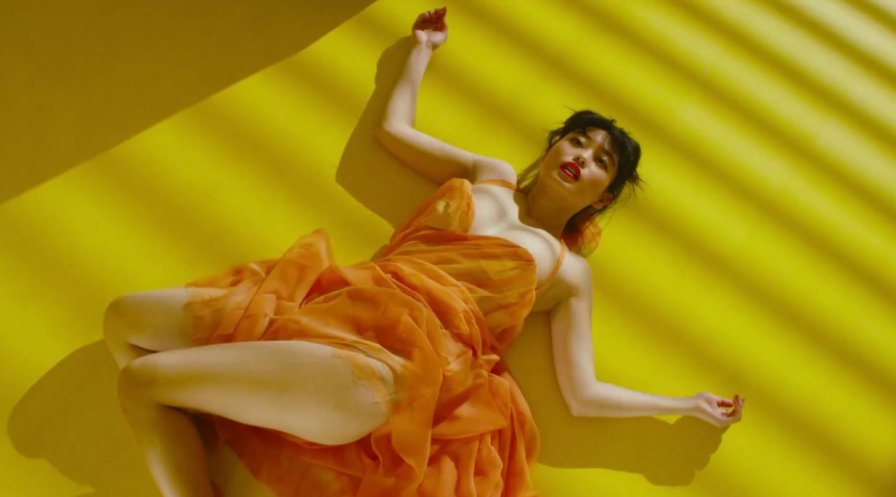
There are not enough trigger warnings on Earth for Antiporno. Sion Sono’s contribution to Nikkatsu’s reboot of its legendary “roman porno” line was an exhilarating (and exhausting) mess of smut that spazzed between high and low class before rocketing into outer darkness. What started as a passion play of artist-and-assistant sadism very quickly went into the weeds — while our lead, Kyoko (Ami Tomite, incredible) flew between multiple personalities (…or does she?), trading lives and power roles with the equally game Mariko Tsutsui. As Sono destroyed every primary-colored fourth wall he could get his paws on, the film’s own inconsistency became its compass. Roles changed within minutes, within shots, to the point where — like Kyoko herself — nothing was reliable. Is it an autocritique of porn? Filmmaking? Men? Women? Personal freedom? Everything? In its t&a, fluid-drenched indifference to taste, Antiporno might seem either liberating or repulsive to the viewer. It’s unclear which reaction Sono and his collaborators might prefer — what is clear is that film would probably most prefer to scream at you until it falls down in a pile of its own puke.
21
It Comes at Night
Dir. Trey Edward Shults
[A24]

One of my favorite moments in post-apocalyptic stories is when the characters come across a wrecked house in search of supplies and stumble upon the decayed corpses of a longtime dead family. This recurring motif always leaves me eager to know more about that grisly situation. Thus, my more than pleasant surprise when Trey Edward Shults’s It Comes at Night explored my enduring obsession with a refreshing take on the post-apocalyptic genre, concentrating the action entirely within a single setting and the slow turn of events leading to the characters’ inevitable ruin. The confined post-apocalyptic story was a risky bet, moving away from the immediately recognizable grandiose scale of worldwide collapse and focusing instead on the tensions between two desperate families. However, the film’s claustrophobic domestic environment and the persistently unsettling feeling of dread created a mesmerizingly bleak experience, wherein the end of the world gives us no heroes, no safe shelter, and nowhere to run except to our own anxieties and fears, which always seem to sneak their way into our nocturnal nightmares. That we are our own worst enemies may not be the most original idea in a post-apocalyptic drama, but It Comes at Night found its own unique approach to explore the gradual deterioration and mental breakdown of the unknown, ill-fated post-apocalyptic survivors.
Welcome to Screen Week! Join us as we explore the films, TV shows, and video games that kept us staring at screens. More from this series
